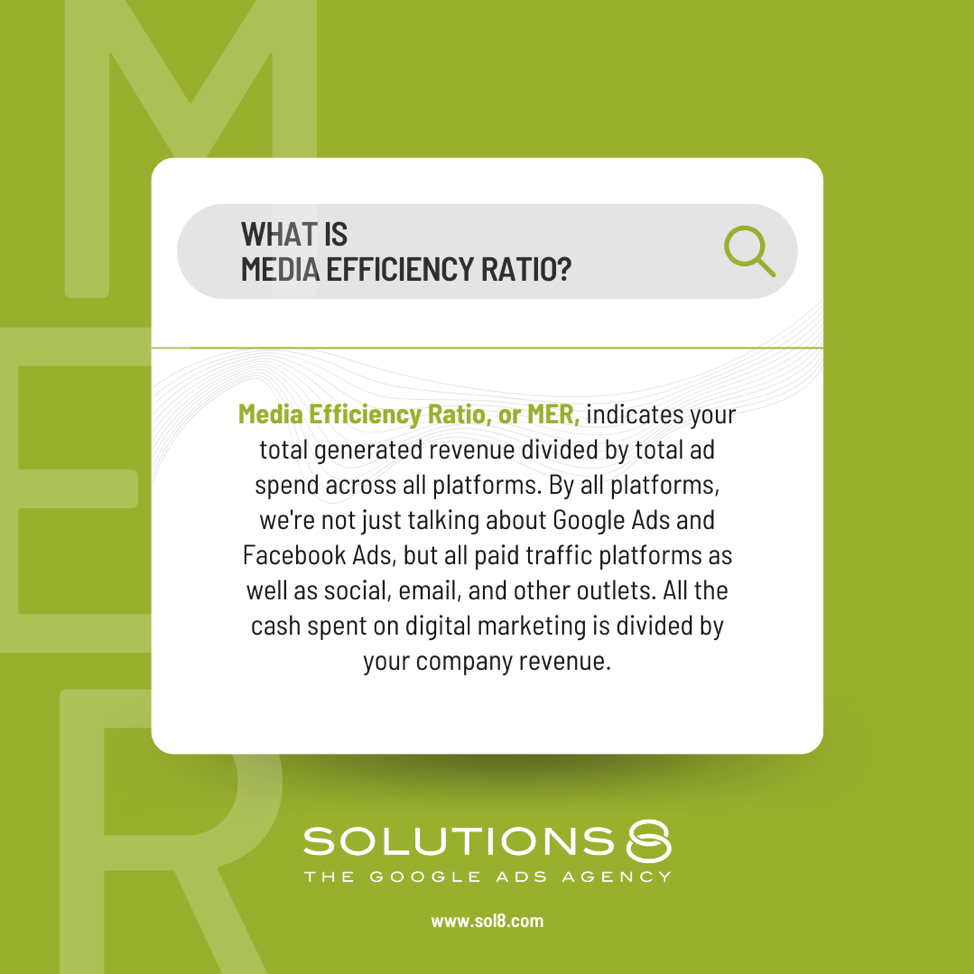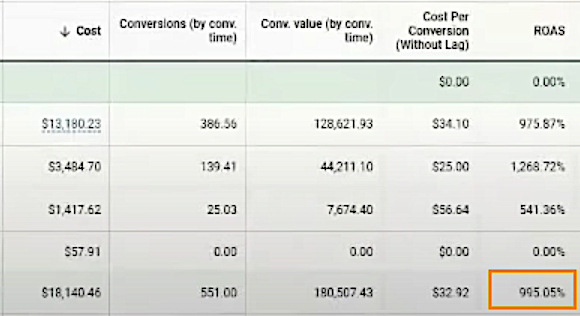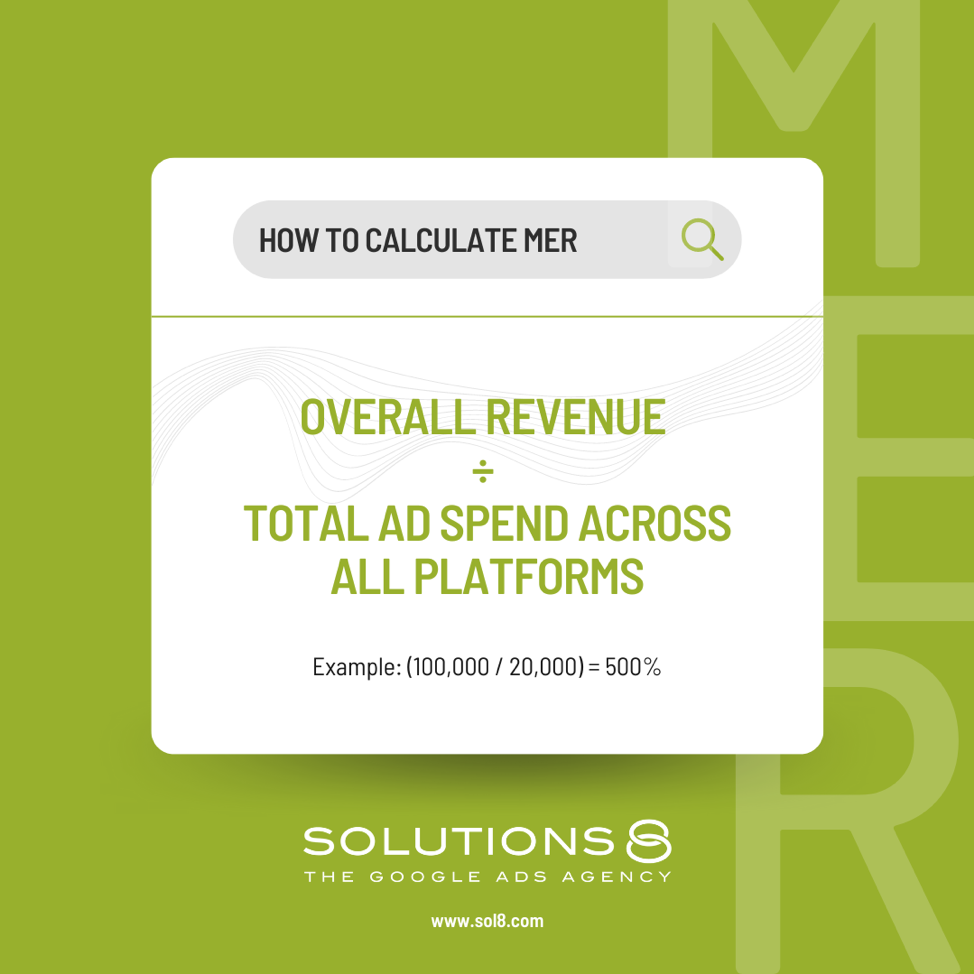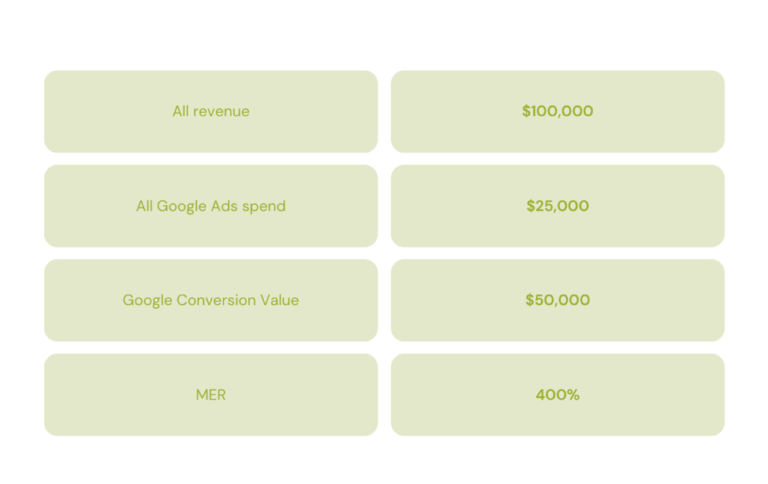Using ROAS Stops Your Business from Growing.
Using ROAS as a default metric is an inaccurate and less effective way to measure your success. To maximize profitability, you need a metric that helps you:
- Track and measure the entire customer journey.
- Attribute conversions to the right marketing channels.
- Identify all the touchpoints that impact your bottom line.
You need Media Efficiency Ratio—a metric that factors in all the touchpoints behind a successful conversion.
ROAS is Misleading and Dated. Contact us to know how we can maximize your profitability using Media Efficiency Ratio.
Mastering Media Efficiency Ratio
When it comes to Google Ads, most people usually measure ROAS (return on ad spend) to understand how effective their advertising is.
But here’s the problem: ROAS is only one of the ways you can measure success, and it’s not always 100% accurate.
First, it can’t fully track conversions, and sometimes conversions are counted twice.
Second, it doesn’t predict future sales.
Lastly, it can be hard (or costly) to scale.
While ROAS is useful in calculating individual campaign performance, it is less effective in comparing the historical growth efficiency of a company.
ROAS doesn’t take into account other factors that contributed to your revenue, such as: cost of customer acquisition, customer lifetime value (LTV), and other marketing channels.
Sure, ROAS can tell you how effective your campaigns are. But the question is…
Are you really making money?
To know the answer, you need a metric that can measure not just one touchpoint in the customer journey, but ALL of them.
Enter: Media Efficiency Ratio.
Table of Contents:
What is MER?

Media Efficiency Ratio, or MER, indicates your total generated revenue divided by total ad spend across all platforms. By all platforms, we’re not just talking about Google Ads and Facebook Ads, but all paid traffic platforms as well as social, email, and other outlets. All the cash spent on digital marketing is divided by your company revenue.
There are many ways for a person to convert. It could be from an ad, from organic search, from social media, email, or even searching for your brand name.
Now, most agencies focus solely on brand. If their brand ROAS is giving them great results, they think there’s nothing wrong with it.
But focusing on brand advertising alone can lead to misleading results. It captures only the last step of the customer journey.
Don’t get us wrong. It’s important to create and run brand campaigns. But more often than not, people who convert from brand are already your existing customers. Spending money on your existing customers instead of acquiring new customers is not a good investment.
This is why ROAS is not a sufficient indicator of success. It doesn’t differentiate between new and existing customers or identify the channels through which customers discovered the brand.
Why It’s Important to Understand Media Efficiency Ratio (MER)
Let’s take a look at this example.
Our total revenue is $335,162. And our total ad spend is $18,140. This gives us 18.47 or 1,847% total company’s return on investment.
With Google Ads alone, our ROAS is 995.05%.
If you think about it, the revenue from other sources that Google can’t track adds up to 852% of our revenue. That’s a BIG difference.

That’s why it’s important to understand your MER.
Theoretically, if you were to increase your ad spend, then your total revenue would also increase in proportion to your ad spend.
But like we said previously, if Google is telling you you’re getting new customers but the reality is that those are repeat customers, then you’re not maximizing your profitability.
The worst thing that can happen is you add more ad spend and get very little return.
By understanding MER, you’ll be able to identify areas where that money showed a return.
If you’re only using Google Ads, then relying on ROAS alone may be okay. If you’re running more omni-channel, your ROAS will look good because your revenue is attributed to paid search. But it’s not accurate.
For example, all your branded organic traffic may show up as traffic from paid ads or direct.
But the truth is, Google Ads made more money because it took more credit than your organic.
So the question is, how do you find the channels and touchpoints that actually lead to those conversions?
By checking and understanding your top conversion paths.
Understanding Top Conversion Paths
Think about how people normally shop online.
It’s not very often that someone who hasn’t heard of your brand before types in your website and converts directly. That rarely happens.
And if it does, they would come through organically, not directly. However, Google Ads sometimes categorizes this into “direct.”
Look at the image below. You’ll see that most of our conversions come from Paid Search. Next is from Paid Search who came back directly.

Now, when we checked our model comparison tool in Google Analytics to find out where those conversions are coming from, we compared the first interaction to the last interaction, and here’s what we found.
Our Paid Search had 434 conversions but our first-time conversions were 334. Isn’t that odd?

The truth is, these are people Google can’t see. They are actually returning customers but Google Ads and Analytics cannot identify that.
And that’s where the MER comes in.
If we know our MER, then we’ll be able to get closer to finding out where the real conversions are happening, outside of Google Ads.
The first step? We need to calculate our MER.
If you want a more accurate way of measuring your marketing efforts, you need a metric that factors in all the touchpoints behind a successful conversion.
How to Calculate MER

The formula for calculating MER is this: total generated revenue divided by total ad spend across all platforms.
Let me give you an example. And to make this simple, let’s pretend you’re only using Google Ads.
Let’s say for the last 30 days, your revenue is $100,000 and you spent $25,000 on Google Ads.

How much return did you get from Google Ads alone? Could it be all $100k? Maybe. Could it be $90k? Possibly.
But we don’t know that because Google can’t track everything. So let’s just assume it took credit for $50,000. That’s Google’s conversion value.
To calculate for MER, you just need to take all your revenue and divide it by all your ad costs.
$100,000 / $25,000 = 4 X 100 = 400%
Your MER is 400%.
Now, if your revenue is $100,000 and Google tracked $50,000, then your ROAS is 200%. But your MER equals 400%. So where did the other 200% come from?
That’s what you need to find out. In order to make the most out of every dollar you spend, you need to identify the areas you can scale without losing much money.
That means getting more cold traffic and new customers—those that haven’t heard from you yet—and that means not going with Performance Max.
The Problem With Performance Max

If you’re running a cold traffic campaign and you’re spending most of your budget to acquire new customers, then your MER should roughly stay the same.
However, with Performance Max, this may not be the case. Your MER dips when you add ad spend to PMax. (More on that later.)
Performance Max utilizes various channels such as Search, Shopping, YouTube, Display, and Discovery, targeting both new and existing customers. You’re only effective at growing 30–40% new customers for every dollar you put in.
When a dollar is invested, 33% of that amount goes toward acquiring new customers, 33% is allocated to remarketing to existing customers, and the remaining 33% is used to target potential buyers.
This can result in a negative impact on your MER as the ratio of spending to new customers becomes unfavorable.
Why? Because Google’s algorithm targets individuals that are likely to make a purchase. It doesn’t matter if the budget is spent correctly.
It will find a way to spend your money because Performance Max is designed to find sales.
So will you be able to see an equal return on PMax? More often than not, no, especially if you’re running omni-channel.
Why Your ROAS Dips Every Time You Increase Ad Spend

There’s a misconception that increasing ad spend will result in more immediate sales. It usually won’t.
Will increasing the budget let Google Ads find more people? It depends if you’re choosing the target.
The problem is, when using automated targeting, the algorithm (not you) chooses people who are most likely to convert. That’s why increasing ad spend doesn’t lead to more sales or faster conversions.
Instead, it causes the same group of potential customers to be shown more ads, without significantly impacting their purchasing behavior.
Let’s say in a week, there are seven potential customers ready to buy from you. Well, if you increase your ad spend, will there be more customers or more sales? No. There will still be seven potential customers. The only difference? You’ve shown them more ads.
And you spent more money. That’s why your ROAS dips.
If this sounds familiar, here’s what you need to do: Stop letting Google dictate where it wants to go.
Use MER to Find Cold Traffic

Using PMax is a sure way to get conversions. But remember, if they’re going to come back and buy anyway, you don’t need to hit them with more Display ads. You’re basically spending more on the same people.
The best way to scale is to convert cold traffic, find more new customers, and spend less on returning and existing customers.
That’s it.
If you’re sending the right message to the right audience at the right time, you can ignore whatever Google is saying because it only knows half of the story.
Use MER to measure and identify campaigns that have the highest chance of increasing and bringing in new cold traffic.
At Solutions 8, we make sure that all the optimizations we implement are supported by data. Media Efficiency Ratio helps us measure and understand user behavior, and adjust our strategy accordingly.











